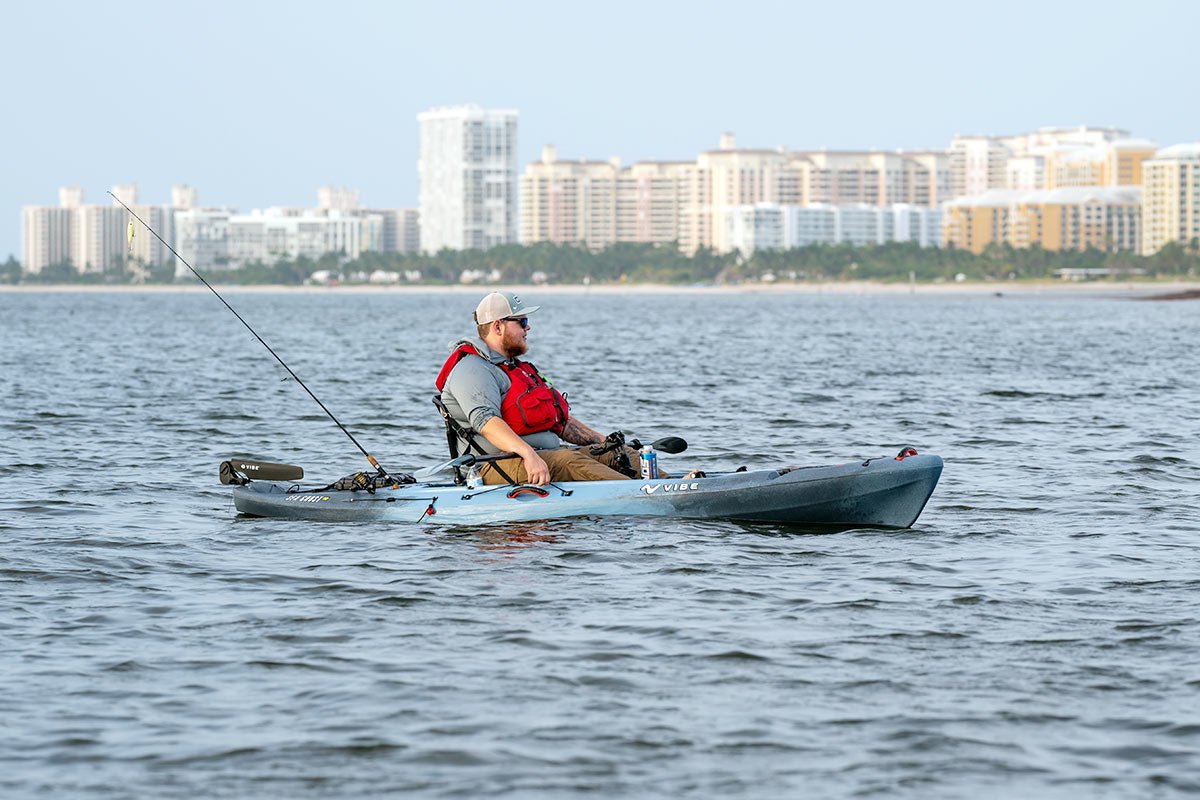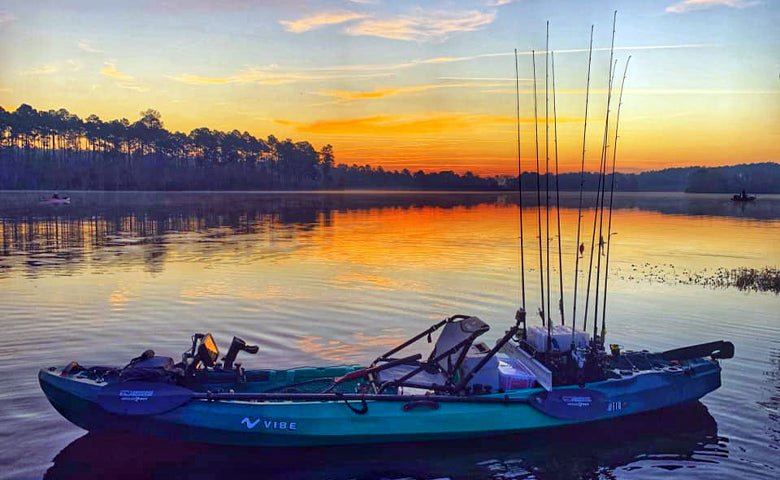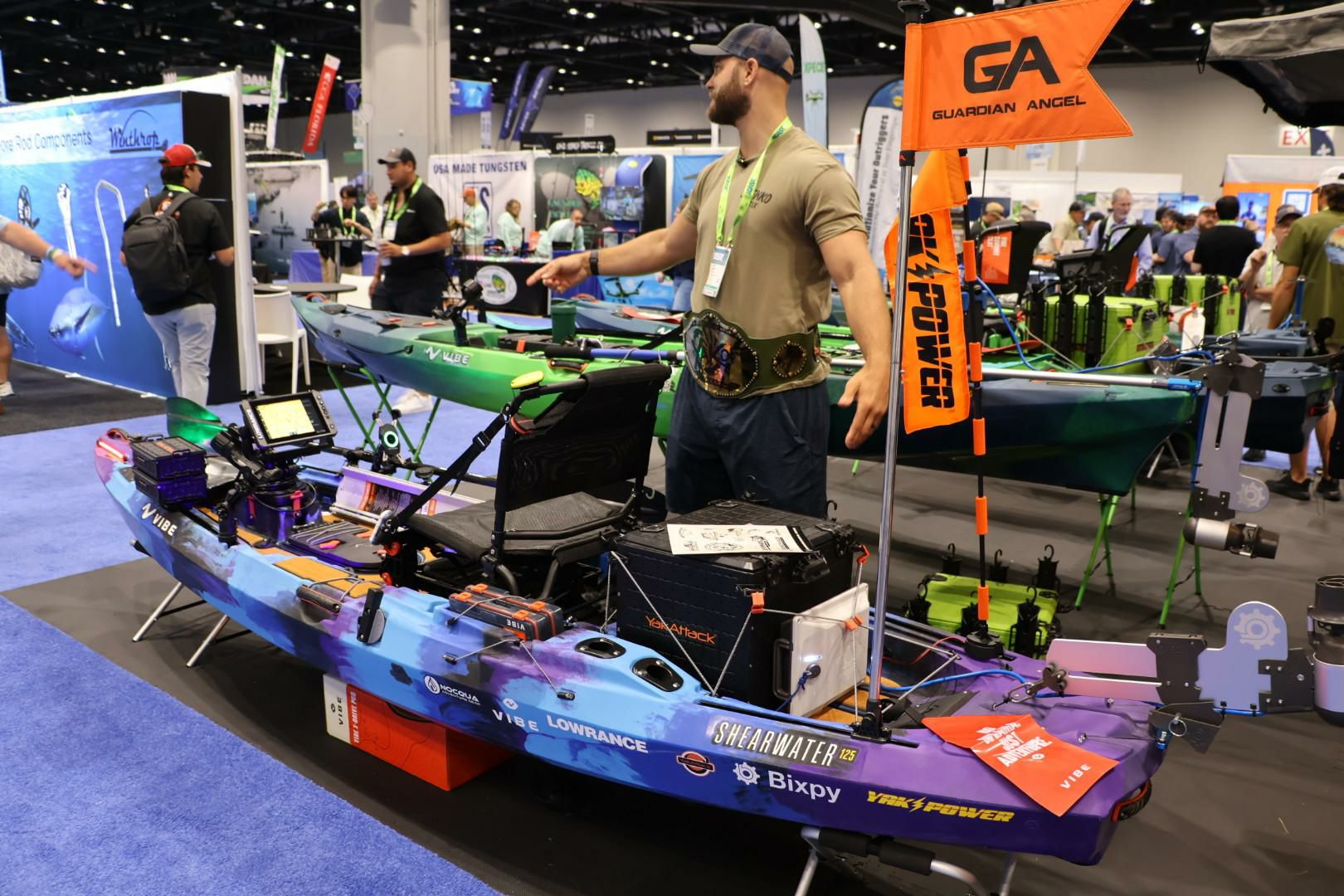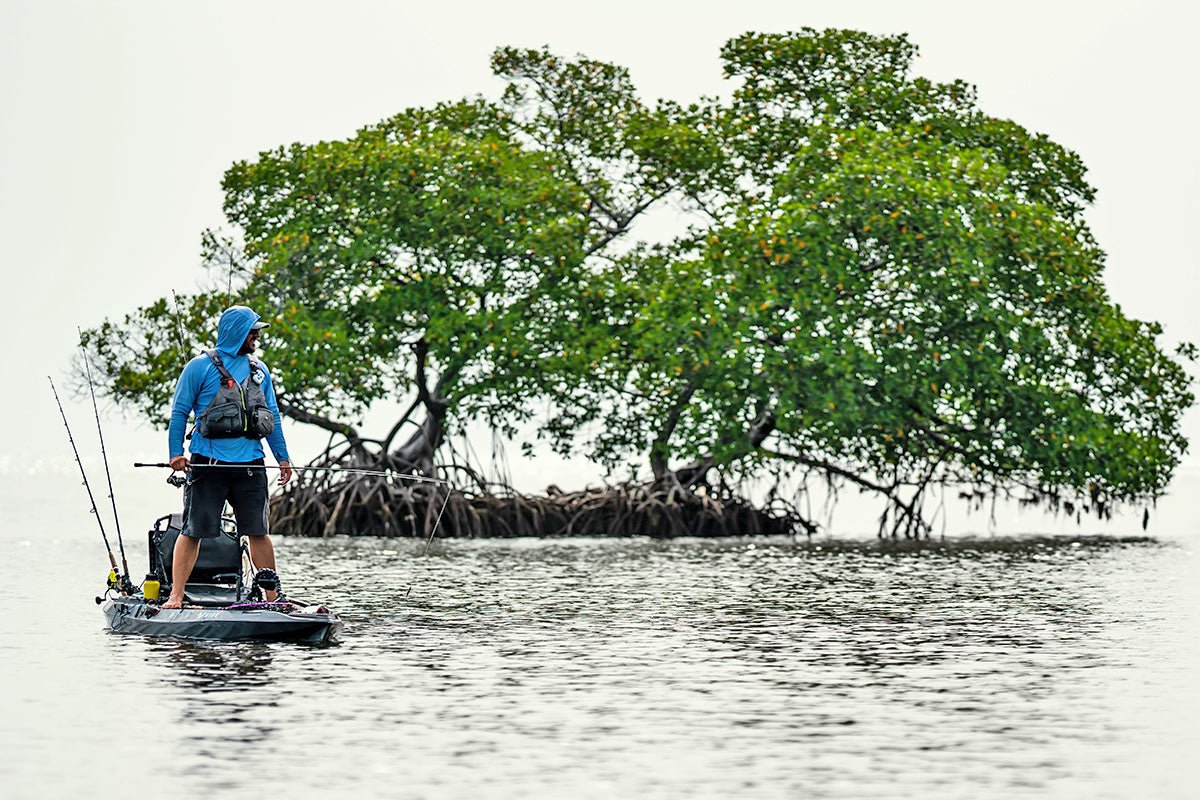How to Master Kayak Angling: the Basics

Kayak fishing is a hobby that can provide you endless hours of entertainment and fun. It can however be a little challenging to figure out on your own, especially if you have spent most of your life fishing from a bank or a big boat. Things are a little different in a kayak, you are the captain, and fisherman, you are the motor and the navigator. There are a few skills you can learn that will make your experience that much more enjoyable, and have you mastering your craft before you know it.
Learn sight fishing:
Sight fishing is all about looking into the water to find fish first with your eyes before you scare them away with unnecessary angler or boat movement. Polarized glasses are a must since they cut the glare off the water and allow you to see below the surface as far as the water visibility will allow. If your kayak is built for stand-up fishing or is extra wide, practice standing and paddling along a bank or shallower water. Have your rod ready to cast.
Learn to cast one handed:
Learning to cast with one-hand may be the hardest adjustment for anglers used to fishing from the bank, or the stable deck of a boat. Even the most stable fishing kayaks don’t have a lot of room between the sitting surface and the water – making the standard two-hand windup cast impractical. Experienced kayak anglers cast one handed most of the time, with either spinning or baitcasting tackle. Maybe go after the fish with lighter combos and more finesse tactics versus heavy flipping sticks and fat jigs.
Learn to move quietly:
Any vibrations you make inside your fishing kayak or on top of the water will likely be felt and heard by fish swimming underneath or nearby. Try not to bang your paddle or rod against the kayak or the water’s surface. Paddle gently but firmly and deeply to minimize excess noise while still moving purposefully towards your target spots. Another suggestion is to pick up some sort of sound dampening padding like the Vibe Deck PFD Kit, this will help you make less noise on the water and increase your comfort at the same time!
Learn efficient lure changing:
Changing your lures efficiently could mean the difference between catching a fish or not. Often you'll cast to a group of feeding or schooling fish only to lose them because you weren't able to quickly and quietly change your lure to another one that might be more effective. Practice changing lures quickly and quietly, and ideally do so before you start an important fishing outing.
Learn how to control a drift:
Drifting is a key kayak fishing skill that will be super useful and can prove to be more useful than using an anchor. Paddle a bit in the direction you want to go - such as towards an area where you think fish will be holding - and then drift with the current through your target area. A single stroke on the right or left side of your kayak here or there will help steer you and keep you on track, some kayaks will come with a rudder that you can use to help control your drift as well.
Learn how to set the drag:
Fighting the fish - no matter the size; from huge redfish to small bass - are by far the biggest thrill you’ll ever get from kayak fishing. Knowing how to set the drag based on the strength of your fishing line and the weight of the hooked fish will determine how much fun and success you'll have when you hook up.
Point the rod tip sideways:
Fishing upwind can be super tough, but especially for new fisherman. One cool tip is to point your rod tip sideways instead of straight up, so you keep your rod and lure low and close to the water during the cast and after the cast. By doing this, you avoid the wind which can push on your line and pull your lure from its target. Also, if you have higher wind gusts, try and time your casts in between the strongest gusts.
Following these steps will help you refine your skills and become a kayak fishing pro before you know it. For more helpful tips and techniques for beginner and advanced kayak angling, take a look at Vibe's other articles and guides.
See you on the water!
Photo by: Jake Suvak



